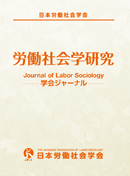The migration of Brazilians to Japan began in the middle of the 1980s and grew suddenly during the 1990s boosted by the revision of the Japanese Immigration Control and Refugee Recognition Act that permitted the entry of Brazilian citizens of Japanese descent to live and work in Japan. Recent research has focused on the relationship between the employment of these migrants and the need of flexible labor suited to just-in-time production systems. One of the key elements to understand the relationship between employment of migrants and the need of flexible labor is the role of subcontractor companies and their brokerage structure. Some studies have emphasized the passive characteristic of these subcontractors, which operate mainly as labor force brokers and almost completely depend on the production and personnel management of the subcontracting companies. This paper will examine the relationship between the active and structured role of the subcontractor company and the labor of the Brazilian workers in Japan through the case study of the Meiwa Company, a large enterprise with activities in key industries like the automobile industry and electronics. The specific focus will be on the case of Meiwa's activities in the factory of AK camera, a leading maker of digital cameras. The main reason to take this approach is the relevance of obtaining a more detailed portrait of the functional relationship between migrant labor force and flexible labor uses, and the nature of said relationship. This will include the managerial framework and procedures of the subcontractor such as recruitment, training, matching process between human resources and job, production control measures and the consequences of this framework to the migrants.
View full abstract
